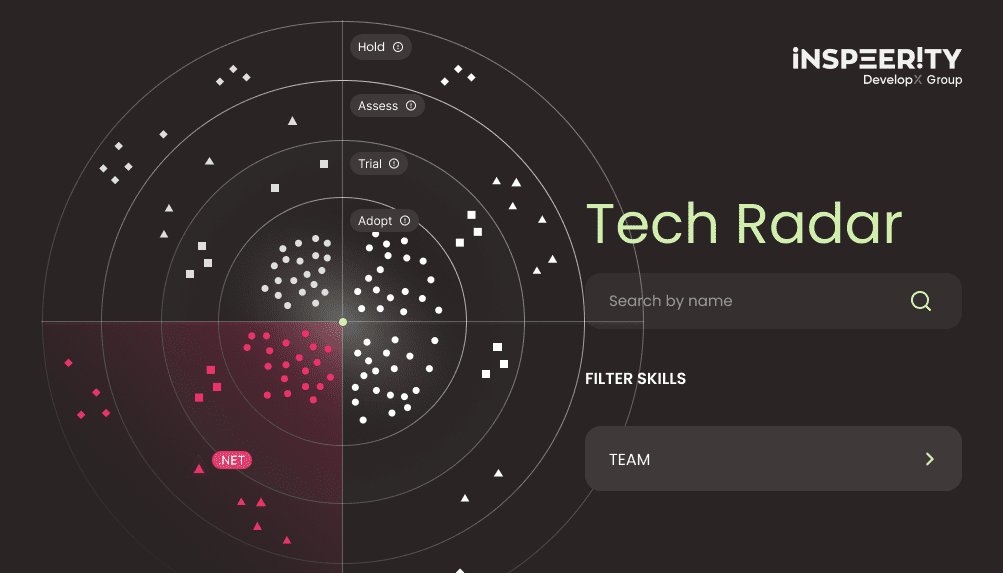Emerging technologies always bring with them the hype, but we should move beyond the initial excitement. And instead, focus on those with lasting impact. It’s essential to consider the key software solutions reshaping the manufacturing landscape. In 2024, certain technologies are set to dominate.
In today’s blog, I will explore the “11 Key Manufacturing Software Types to Consider in 2024“.
Artificial Intelligence in manufacturing
Let’s start with the big one. Even though AI has been around for a long time, the explosion of generative AI has made it the go-to buzzword for most people.
Did you know?
AI is already revolutionizing the manufacturing industry and is expected to boost productivity by over 40% by 2035. The AI manufacturing market size exceeded USD 1 billion in 2018 and anticipates growth at a 40% CAGR from 2019 to 2025.
While its initial hype has settled, its potential in manufacturing remains high. Experts see its gradual adoption in quality management and QMS software, where it can make the largest impact. Initially, its use may focus on areas like maintenance and repair. In the long term, generative AI promises to help through self-optimizing, closed-loop systems. AI is expected to enhance efficiency and productivity in the industry. As the technology develops, its role in manufacturing will grow, making it something you will need to apply to stay ahead.
Discover more about AI software developmental services.
XR in manufacturing
Originally aimed at gaming, XR technology now plays a crucial role in manufacturing. Examples include augmented reality (AR) for product design and virtual reality (VR) for training. With the metaverse hype going away, XR’s focus is shifting back to practical manufacturing applications.
The upcoming release of Apple’s Vision Pro in 2024 is expected to help grow the AR/VR/MR market. However, the smart glasses segment still faces design and cost challenges.
Definition
XR is short for Extended Reality and is is an umbrella term. It brings together all technology linked to Augmented Reality (AR), Virtual Reality (VR), and Mixed Reality (MR). It is estimated that the XR market will grow to $345.9 billion by 2030.
XR technology can improve how technicians and engineers work in manufacturing. As XR evolves, its role in manufacturing is set to expand, offering new ways to improve safety, efficiency, and collaboration.
Internet of Things in manufacturing
The Internet of Things (IoT) helps integrate various services and systems. IoT allows machines, devices, and sensors to talk with each other. This leads to more efficient and smarter manufacturing processes.
This technology is key in gathering and analyzing data from the manufacturing floor. Analyzing the data helps in optimizing operations, predicting maintenance faults, and production quality. IoT’s role in integrating services such as inventory management, quality control, and supply chain logistics helps with data-driven insights.
A study found that 77% of manufacturers measuring the ROI of their IoT initiatives saw an improvement, with an average increase of 28.5%. This underscores the tangible benefits manufacturers are experiencing from implementing IoT solutions.
The Cloud
Cloud services provide scalable solutions for data management and process optimization. They allow manufacturers to store, access, and analyze data. Overall this improves decision-making and operational efficiency.
The cloud enables integration of various systems, streamlining operations and supporting real-time collaboration. As cloud technology advances, its integration with IoT and analytics will further boost processes. Software as a Service (SaaS) is the most widely utilized cloud model in manufacturing, with 89% of surveyed companies using it. SaaS offers a cost-effective, scalable, and flexible solution for operational efficiency.
Blockchain
Blockchain technology is becoming more common, especially in supply chain management (SCM). By enabling a decentralized ledger system, blockchain provides secure and transparent transactions across the supply chain.
This can range from raw material sourcing to product delivery. This technology helps real-time tracking of goods, verification, and streamlined payments. This can significantly reduce fraud, errors, and costs. Blockchain’s ability to ensure data integrity and transparency builds trust among stakeholders. Blockchain is a key driver in sustainable and ethical supply chains.
Case study
One case of blockchain’s impact within SCM is seen in the retail giant Walmart. The company has integrated blockchain technology into its SCM processes to enhance traceability and safety in its food supply chain. By collaborating with IBM’s Food Trust blockchain, Walmart has successfully implemented a system that tracks the journey of food products from farm to store shelves in near real-time. This initiative not only improves operational efficiency but also significantly enhances food safety and consumer trust.
Enterprise Resource Planning (ERP) Systems
Enterprise Resource Planning (ERP) software integrates various functions into a unified system. This integration builds better data management, streamlined processes, and enhanced decision-making. ERP systems such as SAP ERP, Oracle ERP Cloud, and Microsoft Dynamics 365 are still the most popular.
A notable example of ERP’s positive impact is Cadbury, the confectionery manufacturer. By implementing SAP ERP, Cadbury tackled production and distribution challenges during growth. This strategic move significantly reduced operating costs and improved efficiency.
Manufacturing Execution Systems (MES)
Manufacturing Execution Systems (MES) are becoming vital in modern manufacturing. They can bridge the gap between plant floor operations and corporate strategy. These systems offer real-time data collection and analysis. This can enhance the visibility, control, and optimization of production processes. Leading MES solutions, such as Siemens SIMATIC IT, Rockwell Automation’s FactoryTalk, and GE Digital’s Plant Applications, are some key technologies.
An example of MES’s transformative impact is seen in the aerospace sector. Companies using MES technology, like GE Digital’s Plant Applications, have seen improvements in production. Along with boosts to quality management, and compliance tracking. This has enabled them to meet regulatory standards. It has also reduced waste and improved product lifecycle management.
Computer-Aided Design (CAD) Software
Computer-aided design (CAD) software has become a useful tool in product design and engineering. CAD allows engineers to test products in virtual environments before building physical prototypes. Integrating CAD with 3D printing has further revolutionized the design process.
As an example, Tesla uses CAD software to design complex parts for its vehicles and batteries. The use of CAD not only streamlines Tesla’s design process but also enhances product quality and sustainability. As 2024 unfolds, the role of CAD in product development is set to grow. This is driven by advancements in software capabilities and integration with new technologies.
Customer Relationship Management (CRM) Systems
Customer Relationship Management (CRM) software continues to evolve, becoming more sophisticated. Artificial intelligence (AI), particularly chatbots, is enhancing customer engagement and service efficiency. These AI-powered chatbots can handle a wide range of customer interactions. This can be from answering FAQs to providing personalized product recommendations and support, 24/7. This gives customers instant responses. It also allows businesses to gather valuable insights into customer preferences and behavior. This means more targeted marketing and sales strategies.
A notable example of this evolution is seen in the banking sector. Banking institutions are using CRM chatbots to improve customer service. These chatbots assist customers with transactions, account inquiries, and financial advice. The result is reduced wait times and operational costs. Furthermore, by analyzing customer interactions banks identify cross-selling and upselling opportunities.
Read more about TREWOR our internal chatbot.
Predictive Maintenance Software
Predictive maintenance software isn’t one type of solution. It’s a variety of technologies, including advanced analytics, machine learning, and IoT. This software anticipates equipment failures before they happen. This enables proactive maintenance actions that reduce downtime and extend equipment life. By analyzing data, predictive maintenance systems can spot changes in equipment performance. This shift from reactive to predictive maintenance strategies reduces maintenance costs. It also improves asset reliability and production efficiency, supporting more sustainable operations.
Did you know?
Operator error accounts for 18% of unscheduled equipment downtime With unplanned downtime estimated to cost $50 billion annually. A significant factor to downtime is aging equipment, which is the primary cause of unplanned incidents. Additionally, the average cost pf downtime per hour is $260,000.
An example of predictive maintenance software can be seen in the energy sector. Companies like Siemens are using similar solutions to enhance the efficiency of wind turbines. By monitoring various components and using data, Siemens can perform maintenance when needed. This approach minimizes the risk of unexpected turbine downtime. As well as optimizing maintenance resources. This results in significant cost savings and increased energy production.
Conclusion
As we’ve explored the 10 solutions set to define the landscape in 2024, it’s clear that manufacturing is changing. With so many options, the decision to upgrade existing software becomes increasingly crucial. The right software can not only streamline operations but also boost efficiency. This leads to innovation within your manufacturing processes.
If you’re still weighing your options or pondering the impact the right software could have, remember, that the journey towards optimization is never-ending. If you have more questions, you can discover more about us a Manufacturing Software Development Company.




